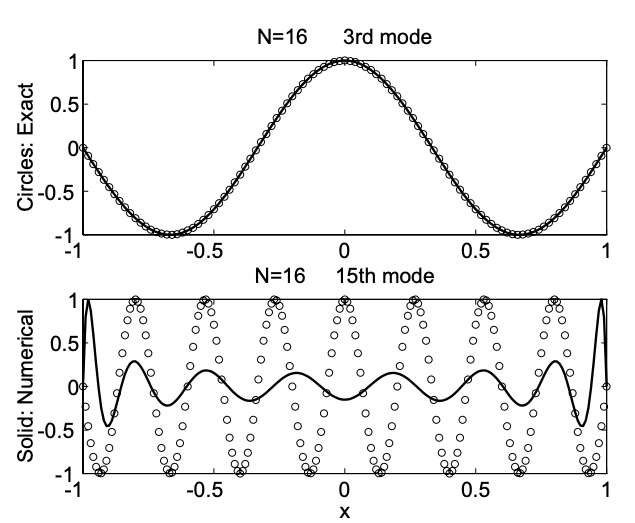Description

Spectral methods are a powerful tool for obtaining numerical solutions to partial differential equations. As such, they are often used to solve a range of problems in applied mathematics.
The basic idea of a spectral method is to approximate the true solution of a differential equation, \(u(x)\) say, by a truncated series of basis functions \(\phi_n(x)\), i.e., by $$u_N(x) =\Sigma_{n=0}^{N} a_n\phi_n(x).$$ Once the basis functions are chosen, the aim then is to find the coefficients \(a_n\) that give the best approximation to the exact solution. Essentially, different choices of basis functions, and different strategies to optimise the \(a_n\), lead to the different spectral methods.
In this project, we will start by introducing some of the common basis functions, typical methods for obtaining the coefficients, and consider some of the mathematical properties of the methods (e.g., convergence rates). Following this, there are many different avenues the project could take, and students will be encouraged to explore an area that interests them. This could include (but is not restricted to) spectral methods in different geometries, cardinal functions, differentiation matrices, discrete Fouirer/Cosine transform, applications of spectral methods to solving PDEs.
Prerequisites
Numerical Analysis II would be helpful but not absolutely essential. Some basic knowledge of numerical computations in Python (or similar) would definitely be useful (but again, no need to be an expert, much can be learnt along the way!).
Resources
- Textbook by Boyd (textbook for Fourier and Chebyshev spectral methods)
- Notes by Dutykh (concise set of introductory notes)
- Notes by Marcus (description of spectral methods with applications in fluid dynamics)
For more information email: Laura Currie